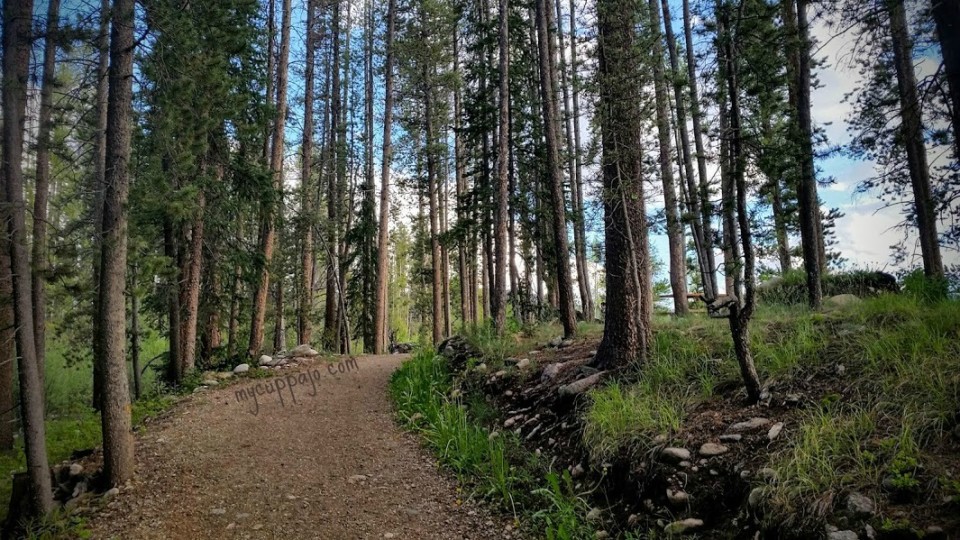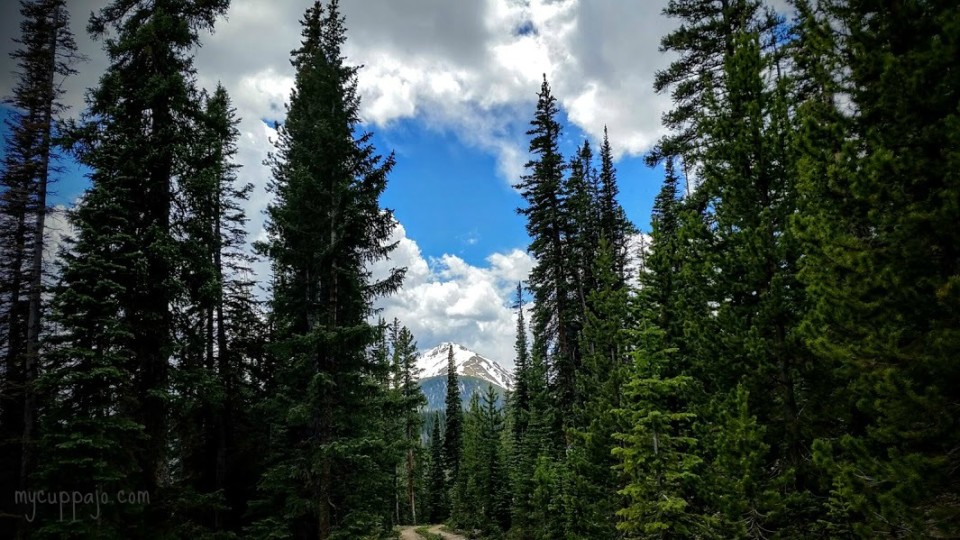When we have chronic pain our world can become very, very small and when our world becomes very, very small, it becomes less populated, less interesting, less motivating, less engaging, less enjoyable…just less. And when our world becomes so very small, our movement becomes small too. Our movement becomes stifled, guarded, restricted, limited…less. We may not move much or as much as we used to and when we do move, we move in the same constricted ways, all the time.
And our pain doesn’t get any better.
So I think we’d all benefit from expanding our world a bit, no matter what size our current world is. I think we’d all benefit from expanding our movement repertoire a bit, too, no matter what size our current repertoire is. This goes for all of us, not just those of us with pain.
With all that is going on in the world beyond our own pain, our own lives, our own day-to-day, it is good for us to get out of our own spaces, our own comfort zones, our own entrenched thoughts and behaviors and ways of moving in the world in order to expand our perspectives a bit, to learn from others and about others, to interact with the world a bit differently, to see it with new eyes, to gain insights not only that wider world, but into ourselves as well.
This doesn’t have to mean worldwide travel or ditching our day-to-day routines, it just means pushing our walls, our boundaries, out a bit and expanding our horizons.
Expanding our world can look like a lot of things
We can expand our world by starting up a new hobby, by learning a new way to move that is fun and enjoyable and interesting, be it dance or yoga or martial arts or sport, by reading books or listening to books or writing books, by going back to school, or taking classes at the local community center or online.
Expanding our world is about pushing out or breaking down some of our internal walls, too. It can be through meditation or setting aside time to reflect on ourselves and on the world around us. It can be taking time to express our gratitude or to volunteer, to better our own lives through helping others. It can be through trying to understand others and trying to see the world from another’s perspective. It can be through writing prose or poetry or keeping a journal. It can be through art or music or sculpture or craft.
Whatever the means, expanding our world allows us to be more curious, to explore, to discover, to learn, to gain new insights, to be more engaged, to connect, to feel motivated, to get excited, to be more creative, to get reacquainted with old interests, to get interested in new things, to become more interesting ourselves.
Expanding our world allows us to get reacquainted with old folks, to meet new folks, to grow and develop and evolve, to see differently, to move differently, to live differently…to really truly fully live.
I’m going to touch upon some of these areas of expansion in future posts, but first up is how our world can become smaller when we’re in pain, how it can become smaller as our movement repertoire becomes smaller because of the pain, and why expanding our movement repertoire is beneficial and can help us to expand our world a bit, too, sort of a reversal of the shrinking.
The two ideas are very much related in circuitous and squiggly ways, I hope I can make the right connections.
Our own little world of pain
We often get stuck in our own little world, particularly when we’re in pain or stressed out or worried about the future. We often want to hide when we feel threatened or in trouble, so it makes some sense that we want to withdraw when we’re in pain. Pain is a signal that our brain has opined that there may be a credible threat to our tissues that needs to be addressed, after all.
So we withdraw, we retreat, we retract. But sometimes we stay in that retracted world long after the it’s safe to come out. And the longer we’re there, the more the thought of venturing back out, of expanding our world, seems scary or impossible or pointless or not worth the effort. It can seem unfathomable or unnecessary.
I’ve been there. There was a time, a couple years worth of time, when my world was just my house and my backyard with a daily walk through the neighborhood. The only people in my world were my husband and my dog (Buster is a people). I was isolated and scared and sad and worried. I was in pain, and I didn’t want to inflict my worries, my fears, my sadness…my pain…on anyone else.
I had a hard time dealing with the outside world, and the people in it, even the people who knew and loved me, because I was having a really hard time dealing with my pain.
I withdrew. My world shrunk.
It was a good little world, my little oasis and my boys, and I’m forever grateful to them for it. But it was a very small and limited world. It was a world where I constantly thought of pain and experienced pain and lived pain. It was a world wherein I became really really good at being in pain.
I didn’t go anywhere. Sitting brought me to tears so car rides were torture, movies were out of the question, and the thought of sitting through a dinner at a restaurant was unimaginable. My social life was nonexistent.
I no longer did the things I used to do: no more running, no more lifting, no more training, no more firefighting. For a long while just walking was painful and worrisome. And I was always so focused on my hip, on the pain, that even when I was out walking in the neighborhood, I was wholly inside my head, inside my hip, inside my own little world.
I used to be so focused on pain that I missed all of this, even when I was standing amongst the trees
In that little world, I stopped moving so much, hoping the pain would go away. And when I did move, I limited my movement repertoire, I moved in the same careful ways, with the same worries, every time I was up and about. Even when I was just standing at the kitchen counter (I didn’t sit on furniture for a couple of years), I stood rigidly, not moving too much, so I wouldn’t move wrong and feel more pain.
And with all this sameness, this rigidness, this very limited movement repertoire, I kept getting the same results. More pain.
Resting shouldn’t be work
During that time I wasn’t just limiting my movement, I was always trying to impose too much control on the movement and postures I did allow myself to engage in. I was always trying to avoid doing certain things or sitting certain ways, always thinking I was moving wrong and sitting wrong and doing everything wrong and that was what was causing my pain. I thought I had to be constantly vigilant, even while ‘resting’.
I was constantly trying to stand or sit correctly: erect, chest up, shoulders back, spine neutral, hips symmetrical and slightly tilted forward, core engaged.
This resulted in my being in a constant state of muscle tension of some sort, which I now know only served to further exacerbate my pain. Resting postures are supposed to be just that, resting, they’re not supposed to require effort and vigilance and work. Our resting postures don’t have to look like a certain thing, they should just feel comfortable and easy and they should change up frequently.
So I was tense all the time and in pain all the time and the more tense I was the more vigilant I was and the more pain I had and the more pain I had the more vigilant I became, the more tense, the more wary of movement in general.
Vicious cycles
As this cycle continued, my movement repertoire continued to shrink. The more I locked up into a tense ball of pain, the less I was able to move with comfort and ease. So I moved less and in fewer ways, and as such, my world kept shrinking, too. I didn’t go places. I didn’t see people. I stayed home, standing at my kitchen counter, thinking about pain.
I think it’s too often overlooked that when we’re in pain or when we don’t move well or when moving is worrisome, we don’t want to leave our safe zones, our pain spaces. We retreat from the outside world and that retreat makes the pain worse, not better.
And the cycle continues.
From my own experience, withdrawing into smaller spaces doesn’t work. Reducing our movement repertoires doesn’t work. Withdrawing from people and places and experiences and movement doesn’t make the pain better or make life easier. It makes it worse, harder.
It keeps us from living, from pursuing the experiences that matter to us. It sucks. I know you’ve been there, too. We all have. But we don’t have to stay there. We can change our experience of pain. We can change our movement.
We can change our world.
A bit on pain and what happens to movement
Thankfully, I began to understand that pain didn’t mean I was damaging myself with movement, that hurt doesn’t equal harm, that pain is an alarm system, a signal to get us to stop and pay attention because our systems have taken in a bunch of information from our internal and external worlds and determined our tissues might be in danger.
Might be in danger, which also means they may not be. Often times, the alarm system becomes a bit too sensitive, a bit overprotective, particularly when we’ve trained it to expect and experience pain really well.
When we’ve been in pain for a long time, we get really good at being in pain. And when we keep limiting our movement, avoiding movement, or fearing movement because of that pain, our system is like ‘whoa, this movement stuff must be dangerous! Better stop it!’.
It becomes a vicious cycle. But the good news is, we can put a stop to it. We can learn about our pain and address some of it’s many factors and come to terms with any factors we may not be able to change. We can expand our world rather than shrink it.
We can expand our movement repertoire rather than limit it (check out part 2!)
Bigger worlds are better :)
As always, thanks for reading my post, folks! If you have made it this far and if you like what you read or think someone else will like it, please share it! And don’t forget to check out Part 2 and Part 3 which expand explain a bit more about movement and pain and about movement variability, respectively.
If you want even more, sign up for the monthly(ish) newsletter that always contains an essay not posted on the blog as well as links to interesting stuff I’ve been reading. Oh, and recipes. I love food.
Until next time, keep moving!



4 Responses to "Expanding our world and our movement repertoire when we have pain: Part 1"